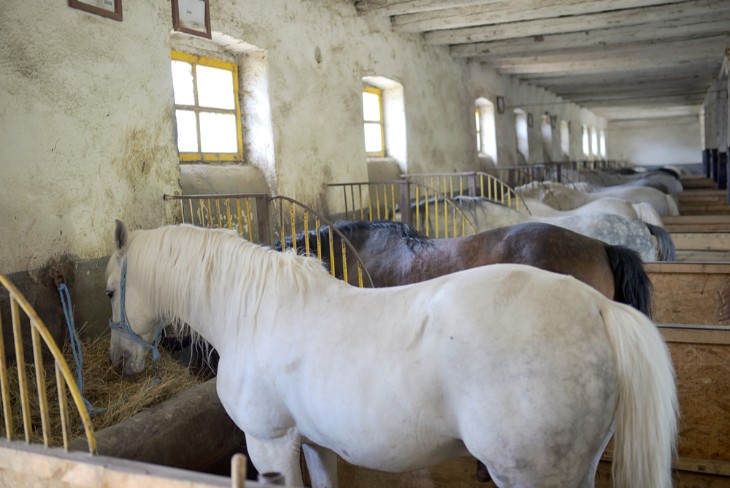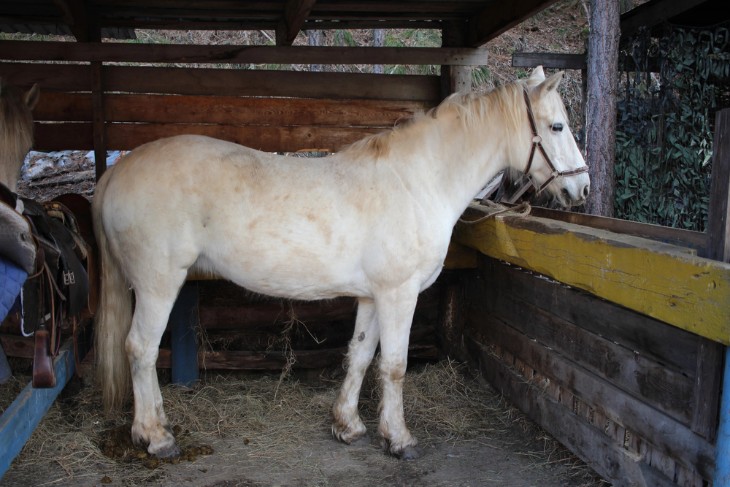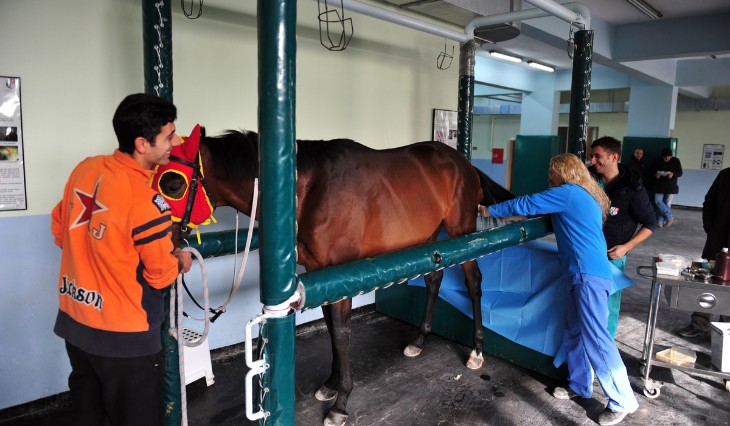Gelding refers to the removal of the testicles of a male horse. It is among the usual practices in horse management. The main reason why people castrate male horses is not only to control their numbers but also to create teachable and manageable behaviour. Geldings are known for being quiet and obedient, which makes them suitable for different equestrian events. This piece will tackle various aspects of gelding, ranging from benefits and health considerations to myth debunking and sports relevance.
What is a Gelding?
By definition, a gelding can be termed any male horse castrated, i.e., its testicles have been removed through surgery. This procedure leads to a reduction in the production of testosterone hormone by about 95%. Testosterone is responsible for aggressive behaviour, such as biting or attacking other animals, especially during the breeding season (spring). Calmness follows removing or lowering this hormone, making these animals peaceful with themselves and humans. However, it’s important not to mistake calmness for weakness because they still possess strength like before castration, though proper training methods can be used positively.
The primary aim behind gelding horses is to ensure safe handling daily and during training sessions. When compared against stallions, geldings tend to focus more on people than other equines, particularly mares, whom they may have been interested in when intact, thus becoming less distracted around them if not altogether indifferent towards such companionship altogether, which makes them a popular choice for various horse activities. Both competitive and casual alike. Their temperament makes them the favourite mount among many riders who engage in different equestrian sports or ride recreationally just because of the stable nature associated with these animals.
Additionally, geldings are easy keepers due to a lack of hormonal imbalances associated with aggressive dominance-related behaviours seen in some stallions who try fighting each other over territory rights within mixed herd structures where there would be limited space available leading to forced contact between individuals sharing the same environment but having different rankings thereby causing injuries among themselves or even death at times which also results into unhealthy living conditions such as overcrowding etc. This cooperative attitude enables them to learn more from their trainers and work better together with riders, thus becoming a vital part of the success achieved during various equestrian events.
Benefits of Gelding
- Improved Behaviour and Trainability: One noticeable change after castration is usually a significant improvement in the horse’s manners. Less testosterone means less aggression, making them easy to handle around people and other horses. Geldings are not prone to challenging behaviours like biting or trying to dominate mates within socialised groupings. This makes them suitable candidates for riding schools where safety matters most.
- Better Concentration during Training: Without constant mating obsession, gelded individuals can focus more during sessions since they have no distraction cycles brought about by mood changes associated with mares’ heat periods. Consequently, they become very trainable compared to all males, who may find it hard to cooperate due to strong wills from time to time while working on tasks requiring a high level of concentration between rider and horse, e.g., dressage, show jumping, etc.
- Wider scope activity involvement: The good nature displayed by these animals enables one to use them in different disciplines, ranging from therapeutic riding programs to gentle enough to suit children of all levels of expertise, therefore saving on costs incurred when buying separate mounts for each category applied skill level.
- Bigger and Possibly Fitter Lives: Castration can result in a healthier and potentially longer life for horses. At the same time, males may suffer from reproductive system-related health problems like testicular cancer or complications resulting from aggressive conduct. These risks are reduced to a large extent when the males are castrated. In addition, decreased levels of aggression and stress may lead to overall stability and better health, thereby enabling these animals to live comfortably as buddies or competitors, unlike the case with intact stallions.

Health And Care After Castration
Post-castration care involves proper attention to help the horse recover quickly and stay healthy. It is necessary to keep quiet around them right after having undergone this operation so that they can heal fast. This mitigates the effect of stress, which could interfere with healing processes. Furthermore, it is essential to house them in clean, dry areas to prevent infections at surgical sites.
Close monitoring during the first few weeks following gelding is vital since there might be signs indicative of allergic reactions such as excessive swelling around the wound or bleeding beyond normal limits; hence, if any unusual symptoms appear, contact a veterinarian immediately. Light-controlled exercises like regular gentle walks are recommended within the early postoperative period, mainly aimed at reducing swelling as well as promoting healing; thus, they should be started early enough doing this exercise.
Long-term healthcare for geldings involves balanced dieting together with routine physical activity, which ensures they remain fit always while preventing diseases associated with overweightness, which is common among these animals due to their calm nature; therefore, feeding on the right meals will help maintain an optimum body mass index, thus supporting general wellness.
Frequent visits by vet doctors are essential since they enable the detection of diseases earlier enough that treatment can still be effective. Besides checking if all vaccinations were done, parasite control measures should be updated during such times. Dental checkups should also be remembered because failure may lead to serious health complications in horses.
Myths and Misconceptions
- Myth: Stallions are more athletic than geldings. It is commonly believed that geldings are less athletic than their stud counterparts, but this couldn’t be further from the truth. Geldings can be just as athletic and gifted in terms of natural ability, if not more so. In many equestrian sports, they perform at or even above the level of stallions. This athleticism primarily depends on individual education, care and genetic potential rather than whether or not a horse has been castrated .
- Myth: Geldings are always calm and easy to handle. Geldings tend to have a more even disposition than stallions, but this does not mean they are always easy to manage. Every gelding has its unique personality and temperament, which can be shaped by factors such as rearing, training methods used, and breed type, among others. Some geldings may still display fiery or problematic behaviours, which must be addressed through correct schooling techniques and general handling skills, just as any other horse .
- Myth: Gelding a horse reduces its value. Another myth surrounding this topic is that people believe castration takes away some worth from the animal involved; however, this could not be further from reality too! Quite the contrary happens – The act of neutering might increase the price tag attached to an equine by making him more straightforward to deal with and, hence, suitable for a wider range of activities & ridership. For most owners/trainers, versatility combined with a good attitude towards work displayed by these creatures outweighs the breeding potential inherent in a few individuals kept entirely till death separates them apart, while others may look forward into eternity together forever whenever two horses share some common ground based on love alone .
- Myth: Geldings don’t exhibit hormonal behaviours. Indeed, geldings do not show off any hormonal behaviour as such because they lack the organs responsible for their production, i.e., testes. Castration significantly reduces or even eliminates stallion-like responses in a horse, which are driven by high levels of testosterone previously circulated within its bloodstream. However, there are still cases where some neutered males might display mild forms of “macho” conduct, especially when these individuals were castrated at a later stage of life than normal, but such actions tend to be less intense than those seen among entire colts having all their bits intact down below.
Understanding these myths helps in appreciating geldings for their true capabilities and roles. They are valuable and versatile animals, capable of excelling in various equestrian disciplines and activities.
The Role of Geldings in Equestrian Sports
Geldings play a significant role in equestrian sports due to their calm and steady nature. They are particularly valued in disciplines where consistency and temperament are crucial. This includes sports like dressage, where precision and a calm demeanour are essential for performing complex movements and routines. Show jumping is another event that requires physical ability and mental focus; therefore, it is no surprise that most competitors prefer using gelded horses in this particular discipline.
Their versatility makes geldings ideal for a wide range of riders. Competitive riding often demands different types of skills from various athletes involved, hence making them suitable candidates for such endeavours; however, recreational riding also calls safety first into action, so reliability becomes an equally important factor alongside other considerations like age, experience level, etcetera which explains why many people find joy while being around these creatures regardless whether they intend participating competitively or just having fun together on trails thus making them perfect partners not only for novice riders but also professionals who may require trustworthy companionship throughout different stages within their athletic career paths as well beyond.
Famous geldings in history have shown just how capable they can be. Horses like Snowman, who went from being a plough horse to a legendary show jumper, and Red Rum, a three-time Grand National winner, highlight the exceptional achievements of geldings in top-level competitions. These stories demonstrate their athletic abilities and capacity to form deep, lasting bonds with their handlers, thus contributing to success in various equestrian disciplines.
The presence of geldings in these sports ensures that a wider audience can participate and enjoy equestrian activities. People are usually attracted by calmness in horses coupled with safe handling procedures, hence reducing risks involved when engaging with such animals, let alone health complications associated with stallions, which is why most individuals prefer using neutered males within these settings over other choices available.

Training and Managing Geldings
To train and manage geldings effectively, you must recognise their individualities and appreciate what they need. Geldings are generally easier to train than stallions since they are commonly mild-natured and more focused in training without being greatly affected by hormones. Additionally, this makes them respond better during lessons and be manageable, especially for riders with less experience.
When training a gelding, starting with simple commands before advancing to more complex tasks is important once he is comfortable and confident about the basics. Consistency is fundamental in any form of training. Regular structured sessions enable the animals to remember what has been taught, reinforcing good behaviour and thus keeping them interested.
Management also entails exercising regularly, ensuring these horses' physical fitness and mental alertness. One can engage in different activities like walking or trotting depending on the type of discipline involved in riding, among other specialised training for this category of equines. Due to their less aggressiveness, they can easily fit into groups, thereby making good candidates for teamwork during social rides.
However quiet they may appear, they should always be disciplined or set boundaries around them because, at times, like all other animals, horses, too, need guidance to know what is expected from their handlers. For example, it would not hurt to use positive reinforcement methods where one rewards desirable conduct through treats or even some extra attention since such techniques work wonders with these creatures, fostering trust between man and beast.
It follows that if we maintain our method of approach towards training, which should be systematic but flexible enough, then there is no doubt that even average-looking steeds will become valuable assets within various equestrian disciplines. The point here lies in adaptability and organisation throughout the learning process on castrated male horses. They are easy to teach and can make one enjoy riding competitively or just for leisure while achieving success.
Handling Behavioural Difficulties
Coping with Mild Stallion-like Behaviours Geldings are generally more mellow than stallions, but some geldings can still exhibit mild stallion-like behaviours, especially if they were castrated later in life. These might include marking territory or displaying dominance over other horses. It is important to deal firmly and consistently with these behaviours; training sessions should reinforce discipline and establish clear leadership, while positive reinforcement for desired behaviours should be used instead of merely punishing unwanted ones.
Dealing With Residual Hormonal Influences When testosterone levels drop dramatically after being gelded, there may still be some hormones left behind within the system, which could influence occasional behaviour problems observed in this group of animals. If any such problems arise, it would be best to consult with your veterinarian, who can provide advice based on individual needs and recommend appropriate medical intervention in case hormonal imbalances need to be corrected.
Adapting To Each Gelding’s Personality Every gelding has its background story and unique character traits, so what worked for one horse might not work for another. Understanding & adjusting to the personality of each gelding is vital. Some may require more strenuous exercises that burn off excess energy, which could otherwise manifest into behavioural issues. In contrast, others might benefit from increased socialisation or mental stimulation through training exercises targeting their cognitive abilities and physical fitness. Observing such specific requirements will help forestall any behaviour-related complications, thereby promoting general health.
Patience and understanding when dealing with behavioural challenges among geldings ensure that they remain healthy companions. The key to success in managing these situations lies in personalised approaches that take into account different facets of a horse’s personality and background.
In Conclusion
Gelding dramatically improves the manageability factor, making it a preferred option for many equestrian undertakings. Familiarity with the needs and idiosyncrasies of geldings enables horse lovers and trainers to make sound judgments that contribute to their overall welfare and performance levels. Through correct care, training methods, and general husbandry practices, these animals can live long, useful lives in both competitive sportive events and casual riding activities.








